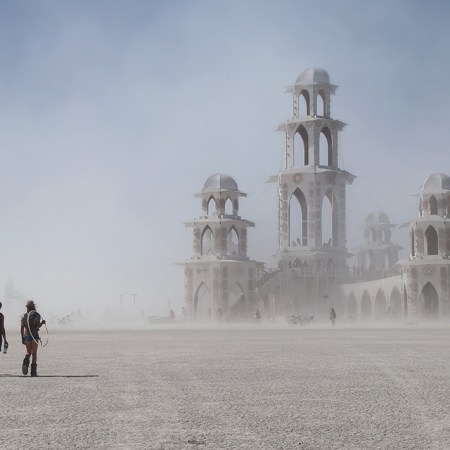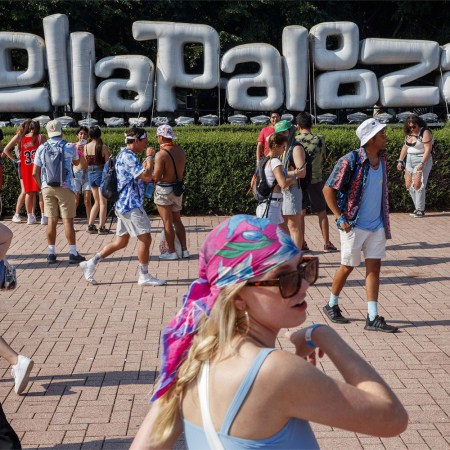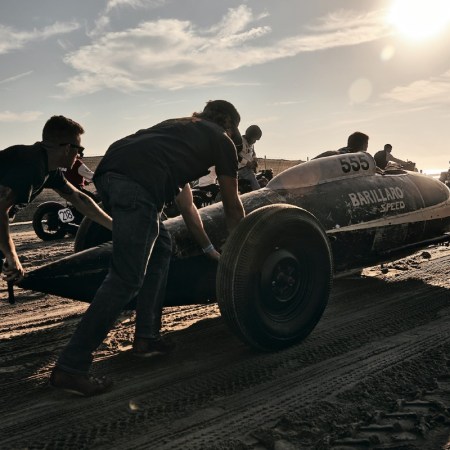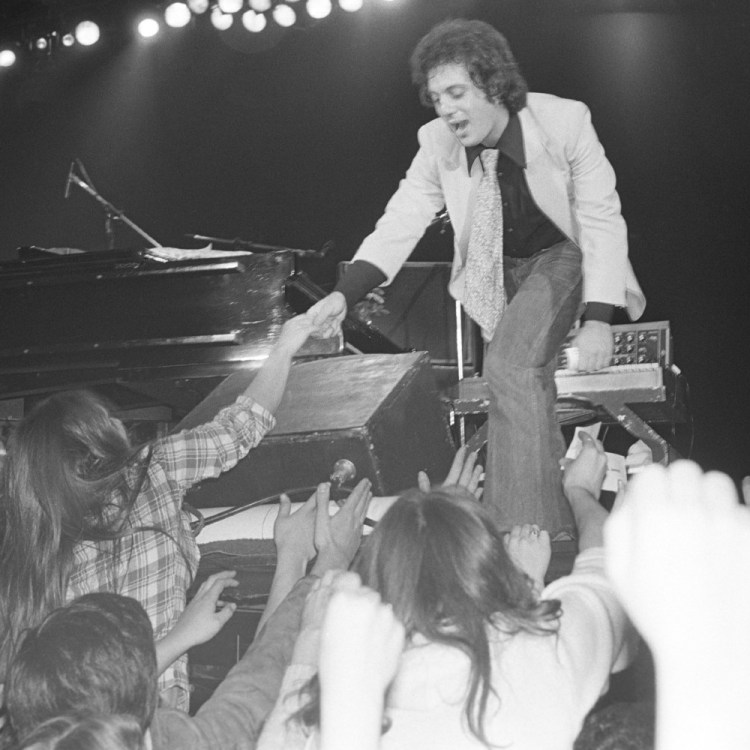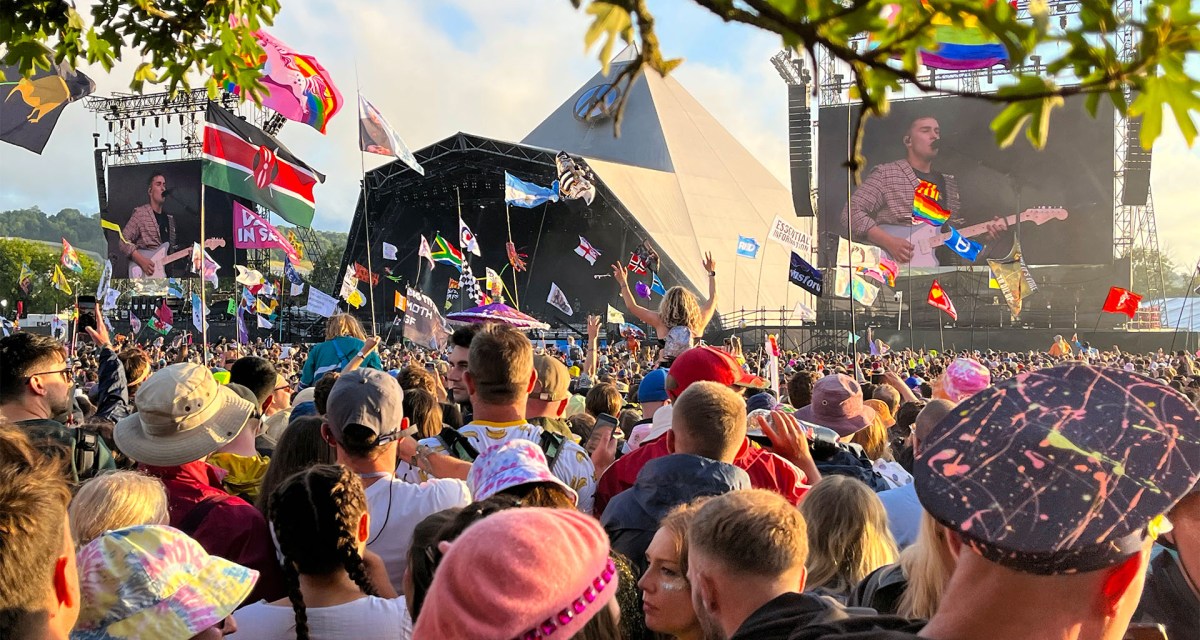
“1987 was the first year that I truly went to Glastonbury — 36 years ago,” said Stuart Roy Clarke by way of explaining his connection to the long-running music festival. If you’ve seen Clarke’s work before, it’s very likely that it’s been in the context of soccer, including a 2020 book of photography simply titled The Game. As he explains it, he’s been documenting Glastonbury for as long as he’s chronicled soccer — if not longer.
“I really began the music thing before the football thing because the football thing didn’t start until 1989-90,” Clarke told InsideHook. And that, in turn, had its roots in a magazine assignment for that year’s festival.
“When I first went to Glastonbury, I went as a photographer. I was sent by Time Out magazine. Their instruction was quite basic: ‘All we need is a nice big picture from the main stage just before the big band comes on.’ I chose The Waterboys at that point,” he recalled. “And the rest was just up to me; I just walked around for four or five days taking pictures. I’ve done that ever since.”
A new book, Glastonbury All Mine, features highlights from Clarke’s photos of Glastonbury over the years. And while there are some images of artists playing music to a massive audience — including memorable photos of Michael Kiwanuka and Jessie Buckley — Clarke frequently turns his camera on individuals taking it all in, from campers grappling with a muddy landscape to sharply-dressed festival attendees.
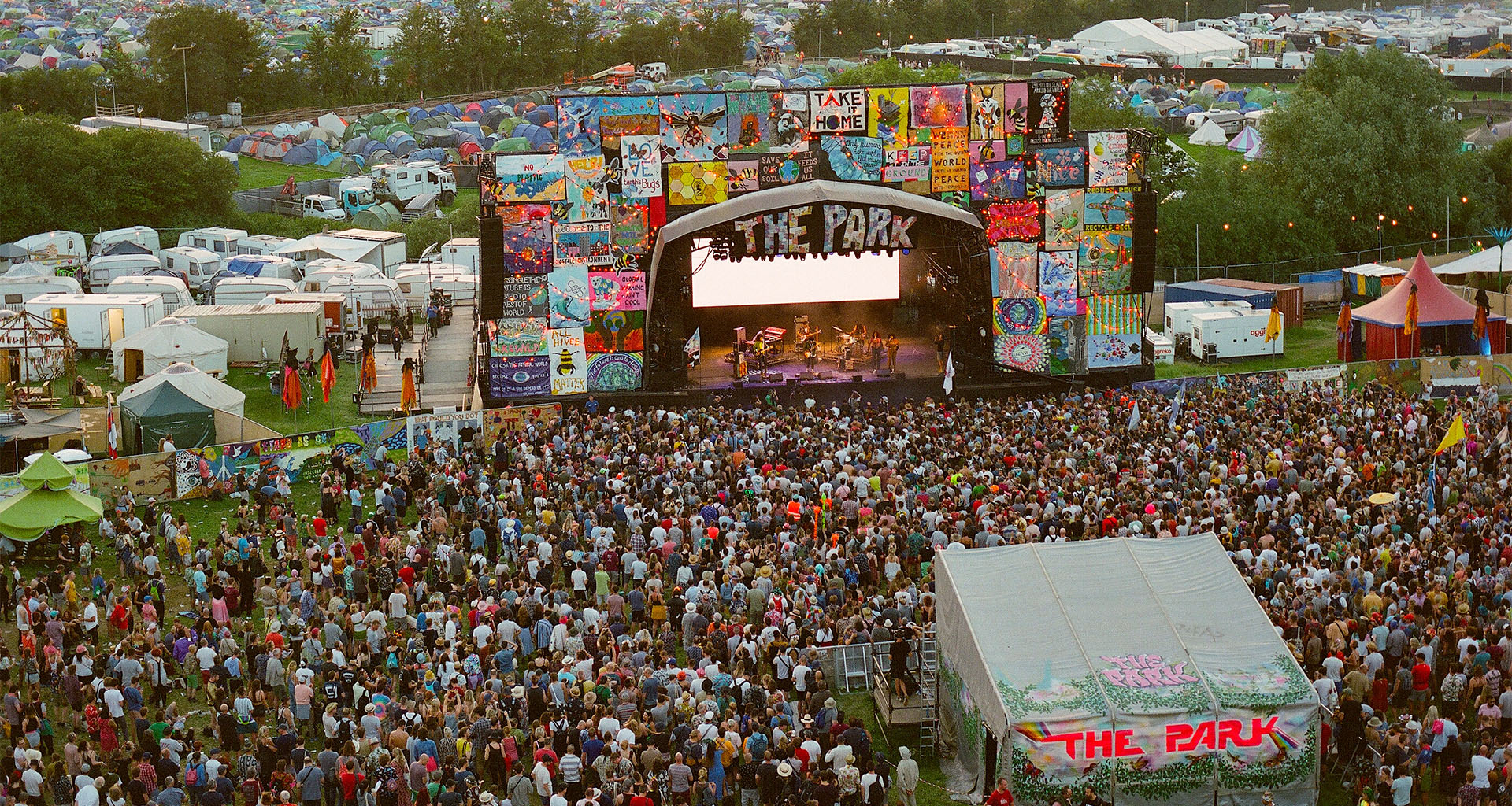
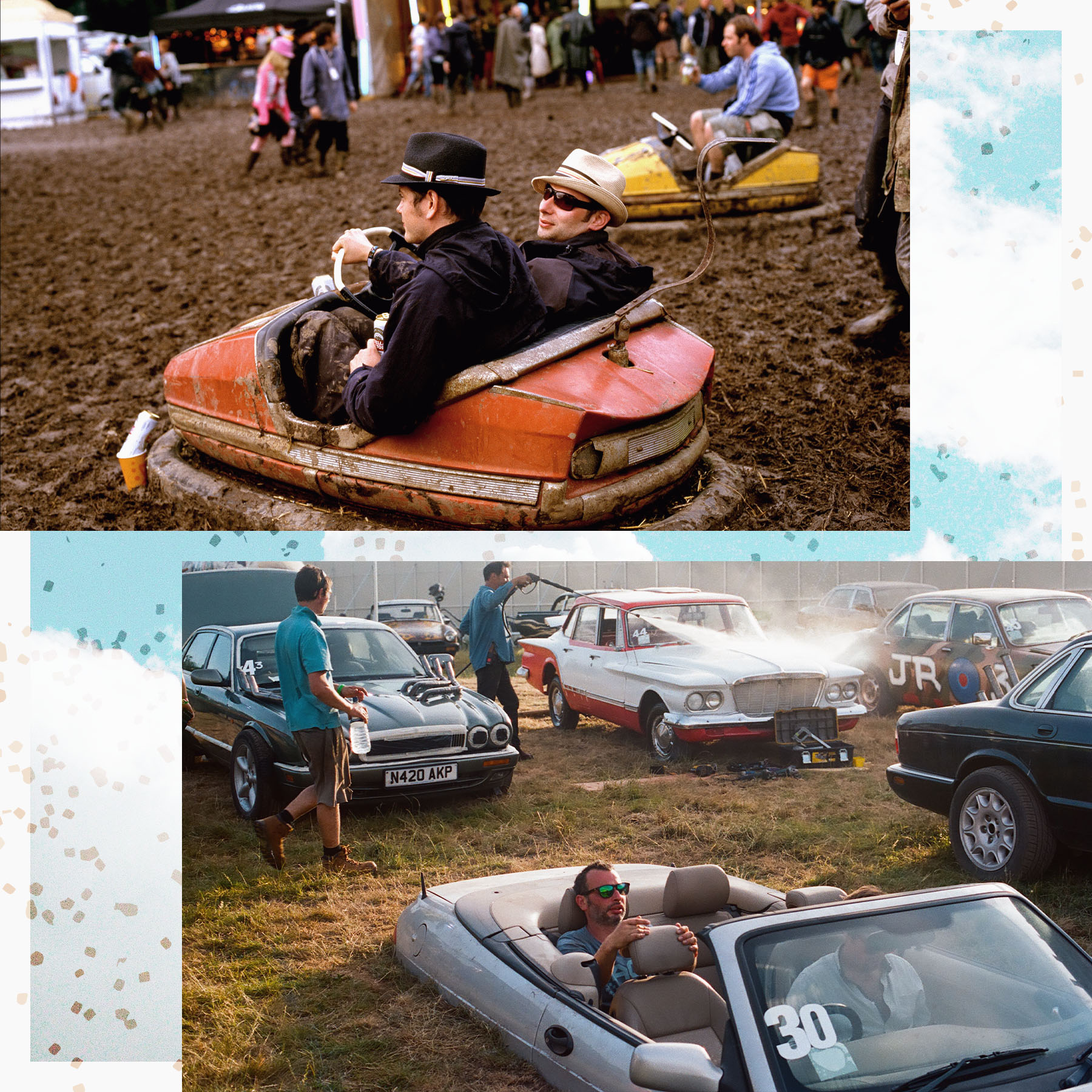
While soccer and music festivals don’t have too many surface similarities, Clarke said that he’s drawn to the cultures that have sprung up around both. “ I’m obsessed by music and I’m obsessed by soccer,” he said. “But it’s always from the point of view of what’s slightly out of the frame? What’s also going on? What’s the background to all of this?”
It’s here, he argued, that his approach differs from that of his peers. “Most photographers in both situations, football and music, they’re there, they’ve got to get the band, they’ve got to get the moment,” he said. “I’m not being funny, but if Madonna trips off stage or whatever happens, they have to get that. They’ve got to get Paul McCartney doing his overture, or Bruce Springsteen having played for four hours. I don’t have to do that, really. I just come up with everything that’s perhaps overlooked or not considered that important.”
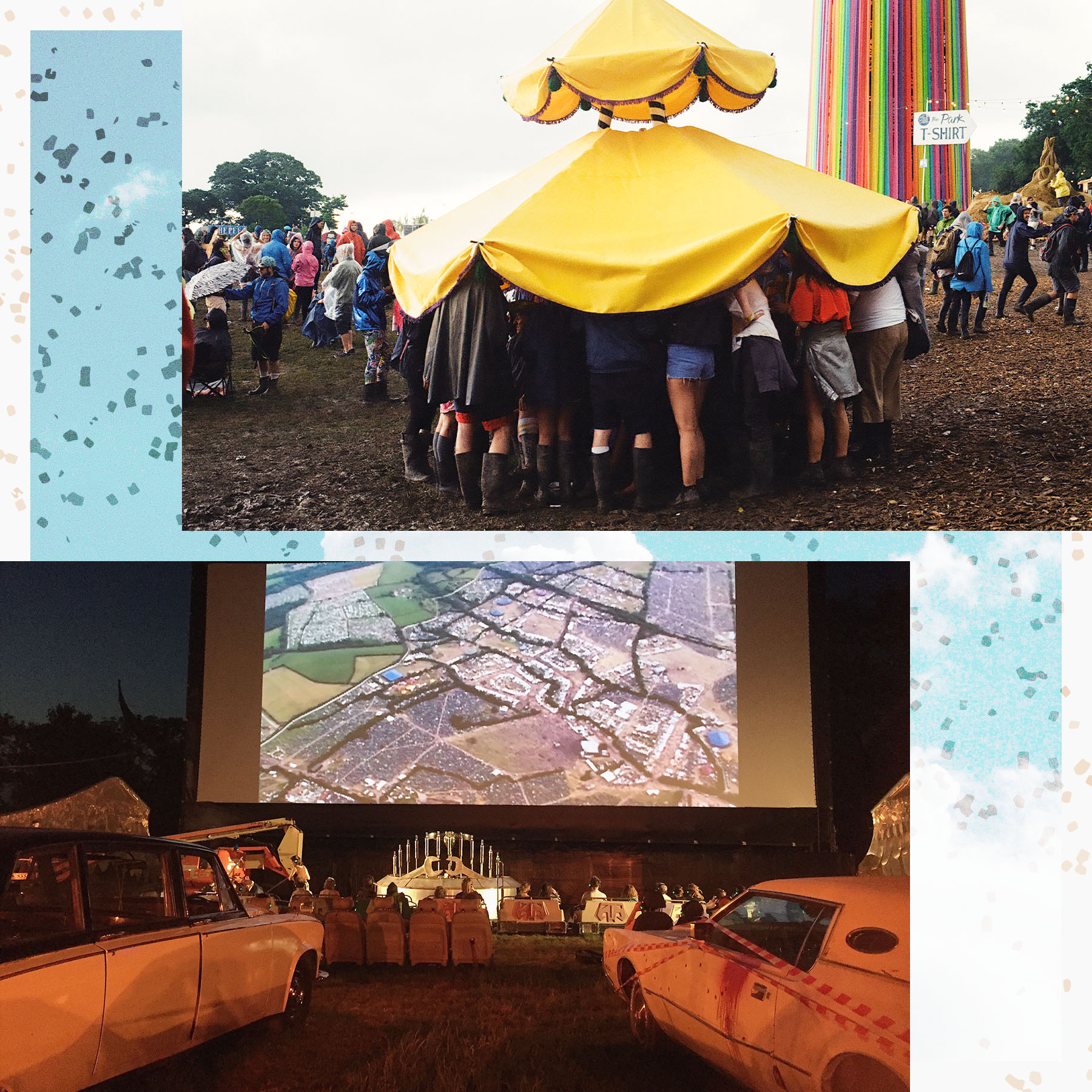
One key to Clarke’s approach to getting memorable photos involves something that might be contrary to festival life: getting up early. “I actually get up very early every single day,” he explained. “As many people haven’t even gone to bed, I’m getting up; it’s light at five in the morning, and you get some amazing pictures.”
Early in our conversation, Clarke pointed out that Glastonbury holds an important position for the region. “The whole of the summer over here is festivals — dominated by Glastonbury,” he said. And a subject that he returns to again and again is the ease at which the festival has aged, with some changes — including fencing and electronic payments — implemented over the years, but with the general mood relatively unchanged.
That also explains one structural choice within the book. Clarke juxtaposed older and newer images in Glastonbury All Mine to point to the ways in which the festival has and hasn’t changed over the years.
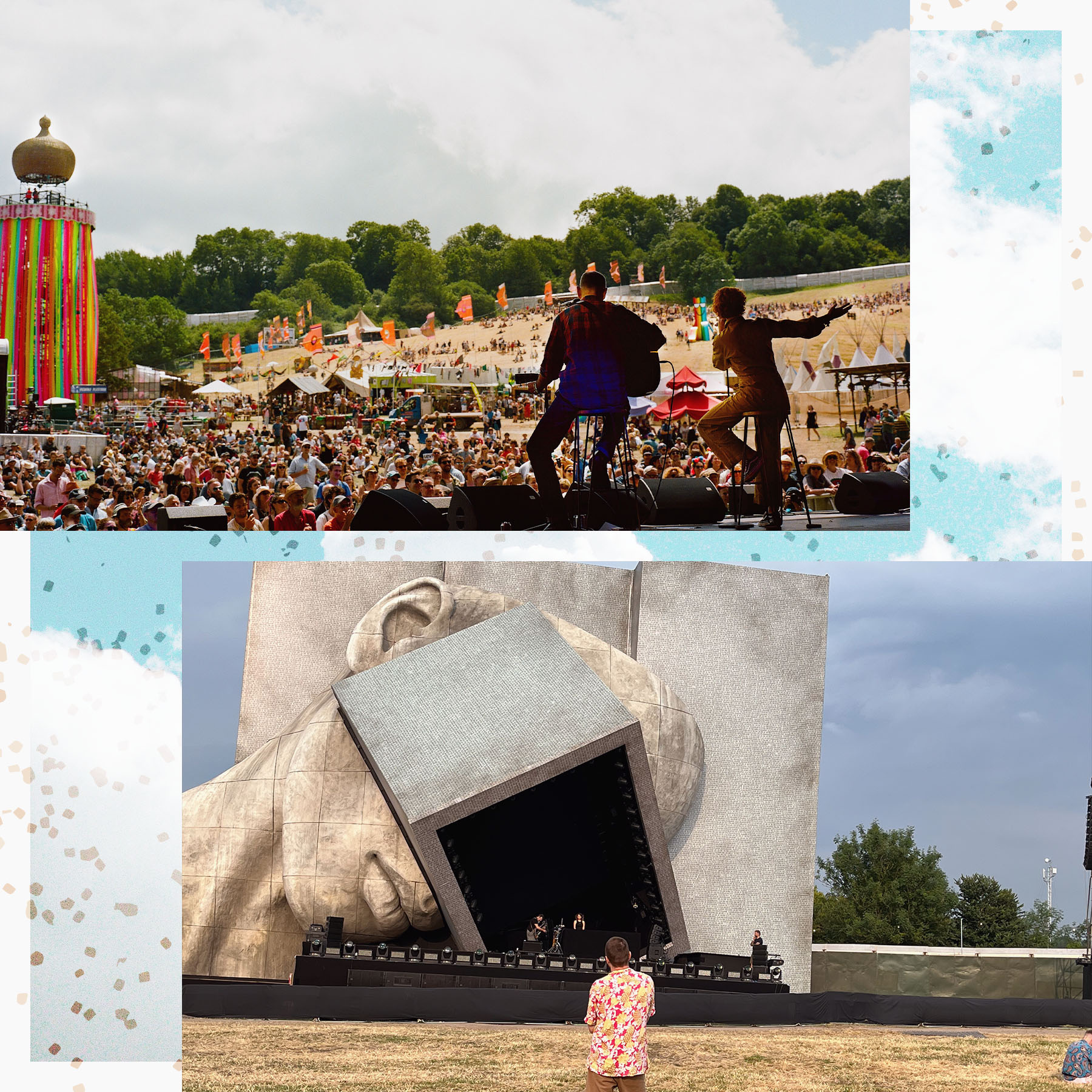
“For the first few pages, partly because some [photos] are in black and white, you always think black and white is a bit older. I’ve purposely done a picture from last year or a couple of years ago, on the back of two or three pictures from the very first year I went,” he said. “And to be honest, unless you look at the caption straight away, you wouldn’t really notice the difference. And then you think, oh, my God, they’re 30-something years apart. It’s incredible.”
“Glastonbury has retained that,” Clarke added. “More than any other festival, it has retained all the things that made it in the first place.” And that endurance is what keeps him going there, camera in hand.
“For the last 30 years, which is the span of me doing this, I don’t think it’s changed hugely. It’s gotten bigger in number. But it still has that authenticity,” he said. “It’s the most authentic event you can go to.” Should you attend this year’s, you might well see a figure in the early morning light, perennially in search of the perfect image.

